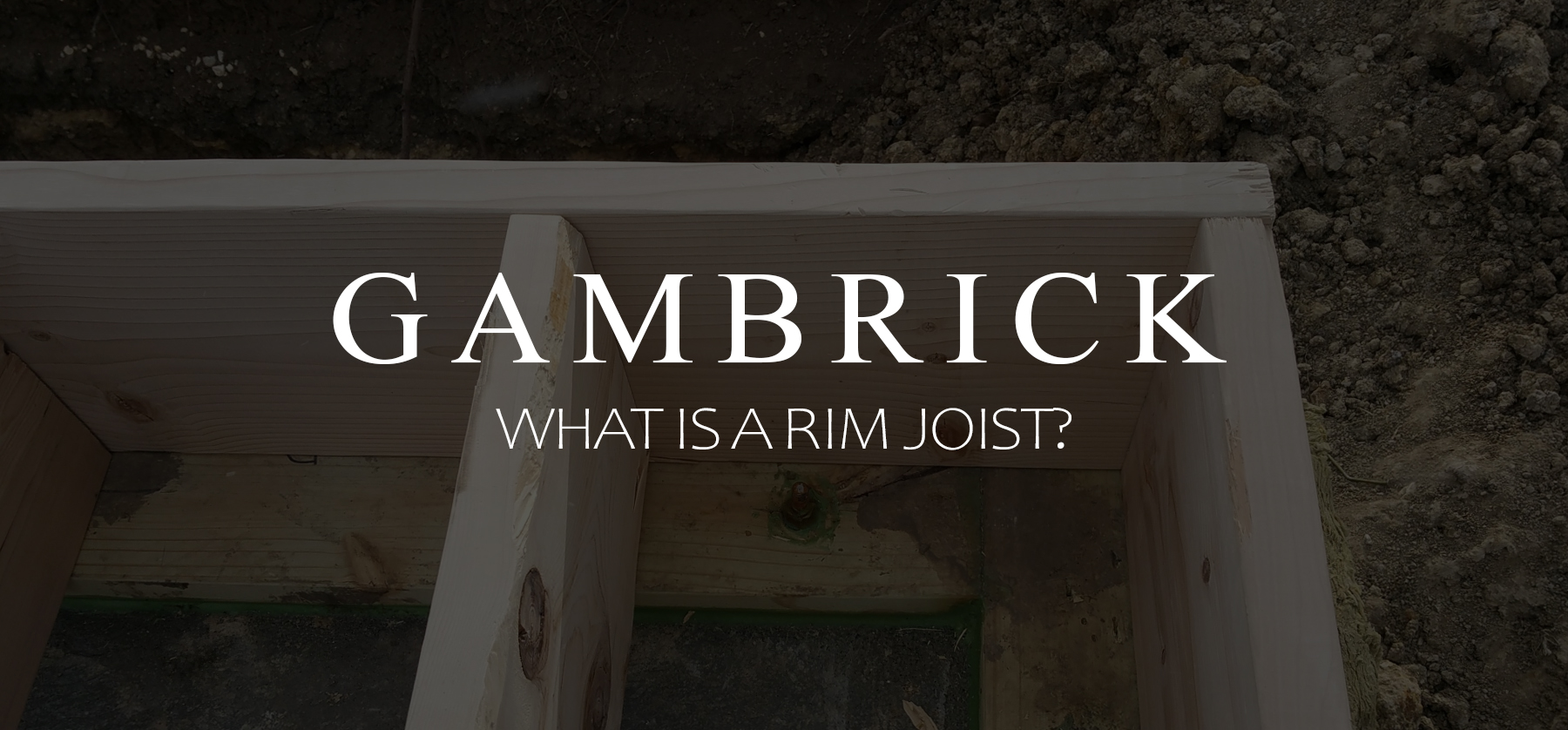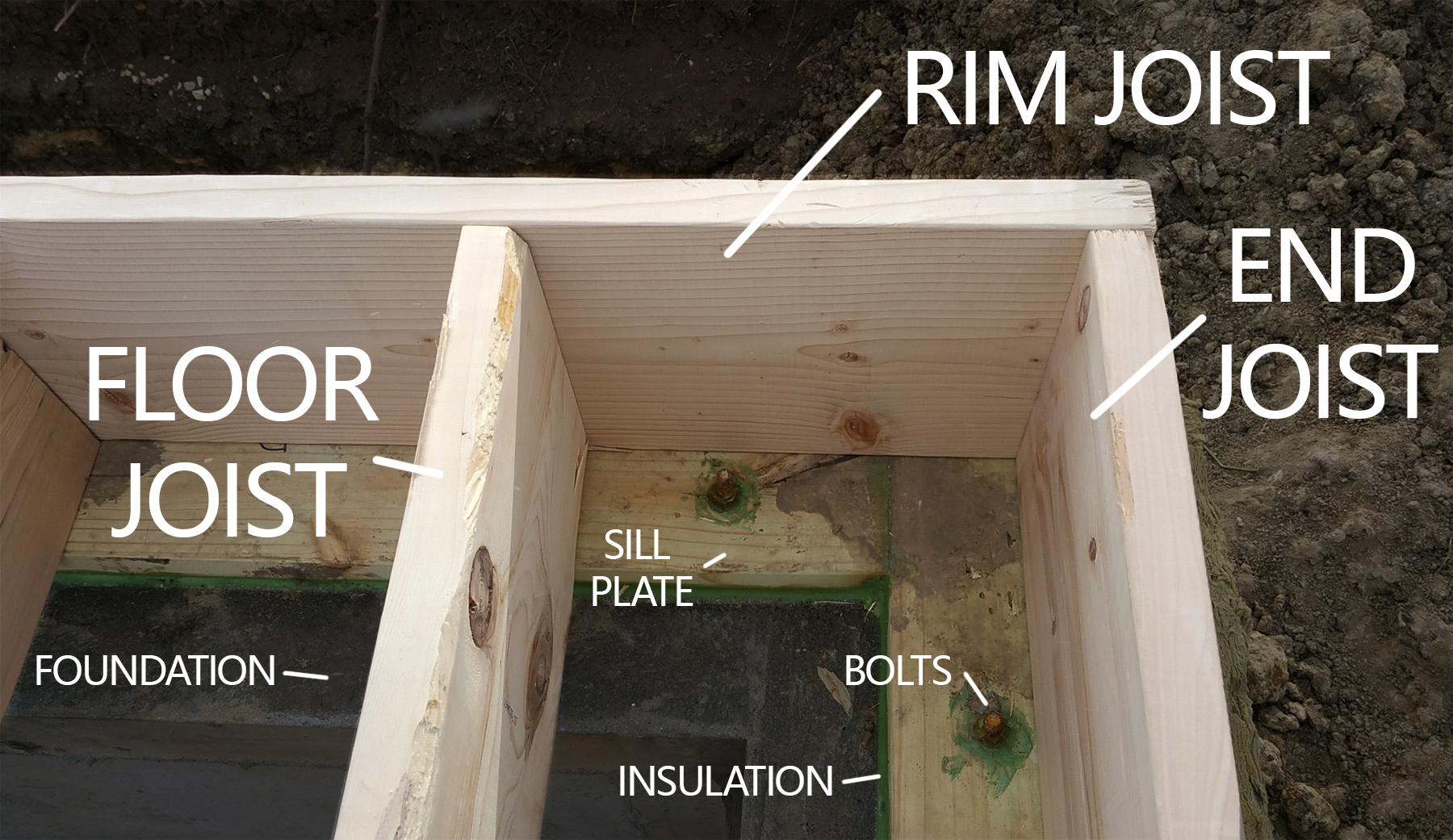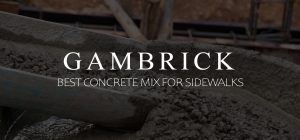What Is A Rim Joist?
Joists are the main structural elements that make up a home’s floor and ceiling frame. Typically, floor and ceiling joists are framed out of different sized 2x or engineered lumber. Once framing is complete, floor joists are covered with a plywood subfloor and finished flooring like tile, wood or carpet. Most joists are spaced a minimum of 16 inches on center apart. The wood that butts up to floor joists and wraps around the perimeter of the floor framing is called a rim joist. They are also referred to as a band joist. If you look at a house from the outside as it’s being framed, you’ll notice a band of solid lumber running along the side of the floor frame. This is the rim joist.
The function of a rim joist is to give strength and stability to the other floor joists. The ends of the floor joists typically but up and nail into a rim joist which prevents them from tipping over to the side. Rim joists help keep floor joists level and upright. Nails are driven through the rim joist and into the end of the floor joist which keeps the entire floor system tied together.
On a typical house, the rim joists sits on top of the foundation wall sill plate. After the plywood subfloor is installed, a wall can be built on top of the rim joist. In cases like these a rim joist is considered load bearing. In other situations, for example the edge of a deck, a rim joist may not be load bearing because nothing is built on top of it. However, most decks use the rim joist to help secure railings and stairs.
Rim joists are a very important part of a home or buildings frame.
What Are Rim Joists For?
The main function of a rim joist is to provide support for the other joists. They’re nailed to the end of inside floor joists which creates an outer edge. This keeps the joists upright, level and strong.
Let’s say your building a deck. You lay out your 2×10 floor joists 16 inches on center on top of the foundation. What keeps them upright? The rim joist. Wood is nailed into the edge of the floor joists to keep them strong and level. Rim joists strengthen floor joists and keep them from tipping over.
Rim joists run around the perimeter of a house. In most cases, exterior walls are built on top of rim joists which makes them load bearing. Exterior walls are framed on rim joists that sit on top of the exterior foundation wall which is built on a footing. Each element is an important part of the home’s structure.
Rim joists cover the ends of each joist bay. When you run a pipe or vent from your basement through the exterior wall, like for a hose bib, typically you’d drill through the rim joist to get to the outside.
Rim joists provide a solid chunk of wood to nail sheathing into. This ties the wall and floor framing together which helps keep a house strong.
On a deck, the rim joist isn’t typically considered load bearing unless a wall is built atop it. But it’s still very important. They provide strength to the floor joists and keep them upright just like the floor joists inside a house. We bolt railing posts into the rim joist to keep the strong. We also the rim joist to support stairs.
As you can see, the rim joist is an important part of a home or decks framing.
Rim Joist Size & Material
Rim joists are usually made of the same material as the other joists. If your framing is wood then they’re generally wood. If they’re steel then the rim is typically also steel.However, in some cases we’ve built a rim out of steel with wood inside joists. This all depends on the architect and engineer and how strong they need the rim joist to be.
Typically, rim joists are the same size as the other joists. This keeps the top and bottom of the rim joist level with the floor joists. However, we’ve built exceptions to this many time. In some cases floor joists and much smaller than the rim joist. In these cases we typically secure the floor joists to the rim with a hanger.
The mot common material used for floor joists and rim joists is 2x framing lumber such as 2 x 10s or 2 x 12s. There are also joists made with “engineered” wood which are called TJIs. These are very strong and typically bigger than standard lumber.
In many cases, engineered and traditional lumber are used together to build a house or building Most of the houses we build use a traditional 2×12 rim joist with TJI floor joists. Your blueprint will detail the size and material type for each part of the frame.
Steel can also be used as a rim joist along with either traditional or engineered lumber. And in some cases all three materials can be used together. It all depends on the spans and loads that need support.
Do I Need A Rim Joist?
Yes, if your framing a house or a deck you’ll need a rim joist. They create the edge of your floor framing and close off the open edges.
For example, if your framing a 10×10 deck off the back of your house, you’ll probably be using 2×8 or 2×10 joists spaced 16 inches on center. The back of each joist is attached to a ledger which gets bolted to the house. Essentially, the ledger is the back rim joist. The front board which creates the edge of the deck is the rim joist. This is needed no matter what type of floor your framing.
Houses, buildings, decks, sheds, and anything else with a framed floor all need a rim joist.
In some cases the rim is also structural. Rims sit on top of the foundation and support floor sheathing. Then an exterior walls is typically framed on top of them. For this reason they need to be strong and stable. In many cases the rim is also secured to the foundation and walls with straps.
In the case of a high deck, a rim helps secure the railing posts. You can nail or bolt the rail post right through the rim. They’re also a great place to secure a stair stringer.
Can You Drill Through A Rim Joist?
In most cases yes. When you run a pipe, vent or wires to the outside from a basement or crawl space, typically it’s done through the rim. A hole can be drilled through the rim, sheathing and siding to the exterior. As long as the hole isn’t too big it shouldn’t weaken the framing.
After the pipe or wire is installed, make sure to insulate around the hole. Use spray foam to seal all the small cracks and gaps. Spray is not only a great way to insulate the house but also keeps out pests and insects.
What’s The Difference Between A band Joist And A Rim Joist?
Nothing. The terms are interchangeable.
When framing a deck or floor system, a rim joist is secured perpendicular to the joists on the end. They provides lateral support for the joists while capping off the end of the floor or deck framing. On a set of blueprints, this part of the frame can either be called a band joist or a rim joist. Both terms are correct.
I should also mention that a rim joist on a house or a deck are exactly the same thing.
Can Rim Joists Be Replaced?
Yes. If a rim is damaged due to weather or insects it can be cut out and replaced. This is done from the outside of the house in sections.
The siding and sheathing have to be removed first which exposes the rim. You may also have to remove some strapping, hangers, bolts etc. If anything is penetrating through the rim, for example wires, vents or piping, they’ll have to be removed and reinstalled after the new rim is in place.
In some cases you may need to support the floor joists before removing the damaged section so make sure you check this before doing any demo.
Once your ready, cut out the damaged sections and replace them with new material. Make sure to secure each new section to the existing joists. Reinstall your hangers, straps, sheathing, underlayment, siding, etc. Install each element in the same way you would if the framing was brand new.
Finally run all your piping, vents and wires and then insulate as needed.
How To Install Rim Joists
The direction floor joists run is determined by the architect or engineer. In general, floor joists run front to back on a rectangular house which is the shortest possible way. Architects try to keep the floor joists as short as possible to prevent flexing. The longer the span, the bigger the joists need to be. In this example, the rim joists would be in the front and back of the house on the edge of the joists.
Rim joists run perpendicular to other joists which means they’re usually parallel to the long side of the house.
The outermost floor joists are called the end joists; they are not rim joists. Only the joists that run perpendicular to the floor joists are called rim joists. They’re easy to spot because from a top down view they look like the letter T.
Rim joists sit on either the top plate (on upper level walls) or the sill plate (on foundation walls). They are nailed into the plate with framing nails.
The connection can be reinforced with metal strapping called tie downs. The manufacturer of the strapping we typically use is called Simpson. You can find the straps at any Home Depot or Lowes.
Strapping helps prevent separation due to movement caused by high winds or an earthquake. The straps basically tie the structure together.
Rim joists are nailed to each joist with framing nails driven through the outside face of the rim joist and into the butt end of the joist. This is a very strong connection that keeps the floor joist level and stiff.
If your using a traditional lumber rim joist with an engineered floor joist then hangers will most likely be needed. One hanger on the end of each floor joist secures the joist to the rim.
Should You Insulate Rim Joists
In my opinion, the more insulation you can get the better. Insulation not only keeps a house warm in winter but also cool in summer. It helps regulate a consistent temperature which keeps energy costs down.
Insulating a rim joist is easy to do.
- Cover the interior face of the rim joist above the foundation walls with insulation. This can be done from the basement or crawl space.
- If your framing a new house, install rigid foam insulation board on your exterior walls far enough down that the rim joist is fully covered.
Air-impermeable insulation should be used to insulate the rim joist because this area is prone to drafts.This can include batt, spray or rigid foam.
If you use rigid foam, make sure to seal along the edges with spray foam. This will keep out air and moisture.
Insulating rim joists with fiberglass batts may let air and moisture through which can lead to mold problems. If your using batts I recommend using spray foam along all the edges and cracks of the wood first to create a better seal.
If a home has multiple floors, insulate the rim joists along the upper floors too. Doing this after the house is already built will be hard because you’ll probably have drywall in the way, so it’s best to do it while the home is being built.
Summary: What’s A Rim Joist?
Joists are the main structural elements that make up a home’s floor and ceiling frame. Typically, floor and ceiling joists are framed out of different sized 2x or engineered lumber. Once framing is complete, floor joists are covered with a plywood subfloor and finished flooring like tile, wood or carpet. Most joists are spaced a minimum of 16 inches on center apart. The wood that butts up to floor joists is called a rim joist. They are also referred to as a band joist. If you look at a house from the outside as it’s being framed, you’ll notice a band of solid lumber running along the side of the floor frame. This is the rim joist.
The function of a rim joist is to give strength and stability to the other floor joists. Because the end of a floor joist butts up and nails into a rim joist, they help prevent tipping. Rim joists keep floor joists level and upright.
If you have any questions or comments about rim joists Email any time.






















